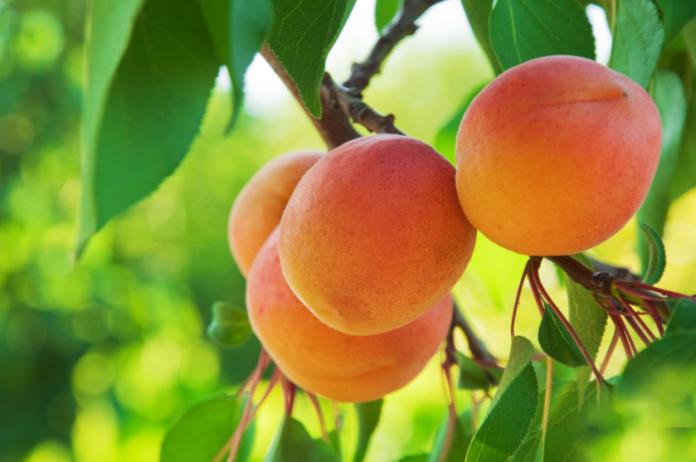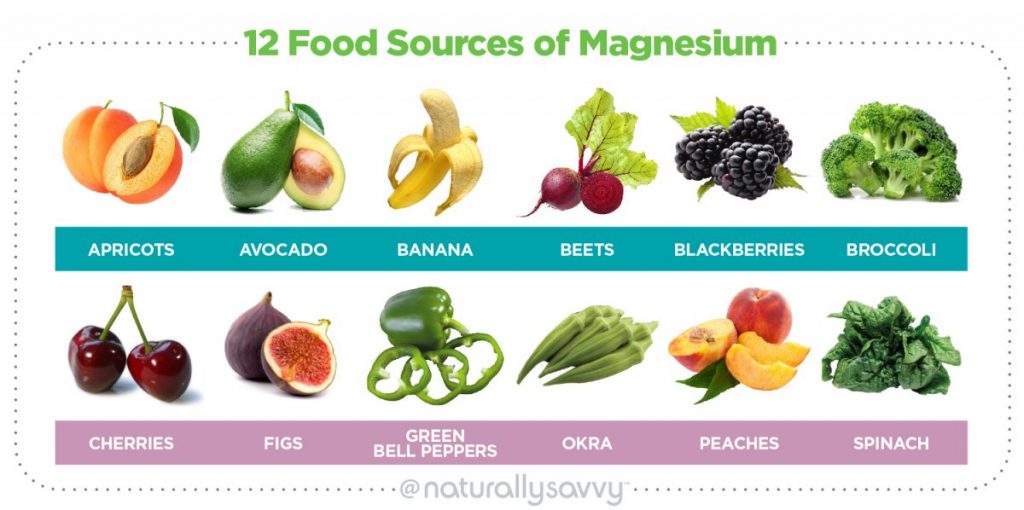
Every so often, there’s an article or scientific study extolling the virtues of magnesium and why this mineral is so critical for optimal health. While it’s true magnesium is an essential mineral, what most of us are really interested in is how we can get our daily dose of magnesium in a convenient way. Unfortunately, our hectic lives (think: stress and eating fast foods) can deplete our magnesium levels and since 70% of us are deficient, ensuring we get enough magnesium on a daily basis is crucial.
If you are looking to get enough magnesium strictly from food, try combining different foods to super-size your intake. Top your salads with flaxseeds (37% Daily Value of magnesium per 46 grams) or sesame seeds (126% Daily Value, 505 mg per 144 grams), or add them to your baking as both are rich sources of this mineral.
The daily recommended intake of magnesium is 420 mg for males and 320 mg for females 31 years old and older.
Read more about magnesium, the most magnificent mineral
Food Sources of Magnesium
Below are 13 fruits and veggies that provide a significant amount of magnesium. We offer a few ways to enjoy these foods but feel free to experiment and share your recipes with us in the comments below.
Apricots
One cup of fresh apricots provides 15.5 mg magnesium, which is 4% of DV. Combine with other fruits in a fruit salad or as a topping for cereal or yogurt.
Avocado
Try eating avocado toast for breakfast. It's a great way to combine the rich magnesium found in this fruit along with whole grains, which also contain some magnesium. If you choose a bread made with seeds, magnesium levels can be boosted even more. One medium avocado provides 58 mg (15% DV) magnesium.
Banana
Peel yourself a banana, because it contains 32 mg (8% DV) of magnesium and also is a good source of potassium, manganese, and vitamin B6. Add a ripe banana to a smoothie or fruit salad to increase your magnesium intake.
Beets
Both beet greens and the bulbs themselves are good sources of magnesium, although the former is better. One cup of beets provides nearly 40 mg of magnesium and 34 mg of folate. Beet greens, on the other hand, are a great source of magnesium (98 mg or 24% DV per cup cooked) and an exceptional source of vitamins A and K.
Read more about the health benefits of beets
Blackberries
Whenever they are in season, make blackberries a part of your diet. That suggestion comes from the fact that these berries are a good source of magnesium, to the tune of 28.8 mg per cup, or 7 percent of Daily Value. Enjoy in a fruit salad, as a topping on cereal or yogurt, or in baked goods.
Broccoli
This cruciferous vegetable is not only a great source of magnesium (19.18 mg per cup or 5% CV) but fiber, vitamins C and K, iron, and potassium, and fiber as well. Broccoli can be enjoyed in so many ways, from cold and hot salads to casseroles, side dishes, soups, and smoothies.
Cherries
One cup of cherries provides 15.2 mg magnesium, or 4% DV. They are a convenient snack food for any time of the day. Don’t let the pits deter you from enjoying these fruits. Feel free to add cherries to a fruit salad or as a topping on cereal or yogurt.

Figs
One-half cup of dried figs can increase your magnesium intake by 50 mg (13% DV). Figs are a delightful addition to a fruit salad, but they also are great as a cereal or yogurt topping or in smoothies.
Green bell peppers
One cup of green bell peppers provides 14.9 mg magnesium, which translates into 4 percent Daily Value. Green bell peppers also are an excellent source of vitamin C and a good source of vitamin K.
Okra
In addition to magnesium, which is available at 57.6 mg per cup, this vegetable also provides a very good amount of vitamin C and vitamin K. You can eliminate the slime associated with okra by soaking the vegetable in vinegar for 30 minutes before you cook it just be sure to rinse the okra well and pat dry before cooking. You also can pre-cook okra by blanching, roasting, or sautéing and then adding the cooked okra to your recipe.
Peaches
These summertime treats provide 15.7 mg magnesium and 4% DV per cup. Peaches also are rich in anthocyanins, which are potent antioxidants that can help boost brain health, keep your liver healthy, help prevent cancer, improve vision, fight obesity, and support heart health, among other benefits.
Spinach
One cup of cooked spinach contains 157 mg (39% DV) of magnesium. Spinach can be enjoyed raw in salads or on sandwiches or cooked as a side dish, in casseroles, stir-fry, or in smoothies.
Swiss chard
Every cup of cooked Swiss chard you consume provides 150 mg (38% DV) magnesium. This leafy green veggie also is an extraordinary source of vitamins A and K and an excellent way to get your vitamin C, manganese, potassium, and iron. Stir fry with other leafy greens along with seeds and nuts to maximize your magnesium intake.
It's great to strive to meet all your nutritional needs through the foods you eat but when your diet falls short, consider taking a high-quality, well-absorbed magnesium supplement.
Sources
Leonard J. 7 life-changing reasons to eat more anthocyanins + top foods. Natural Living Foods 2016 Mar 3
Link R. Top 10 magnesium-rich foods plus proven benefits. Dr. Axe Food is Medicine
National Institutes of Health. Magnesium
Nutritional Magnesium Association










